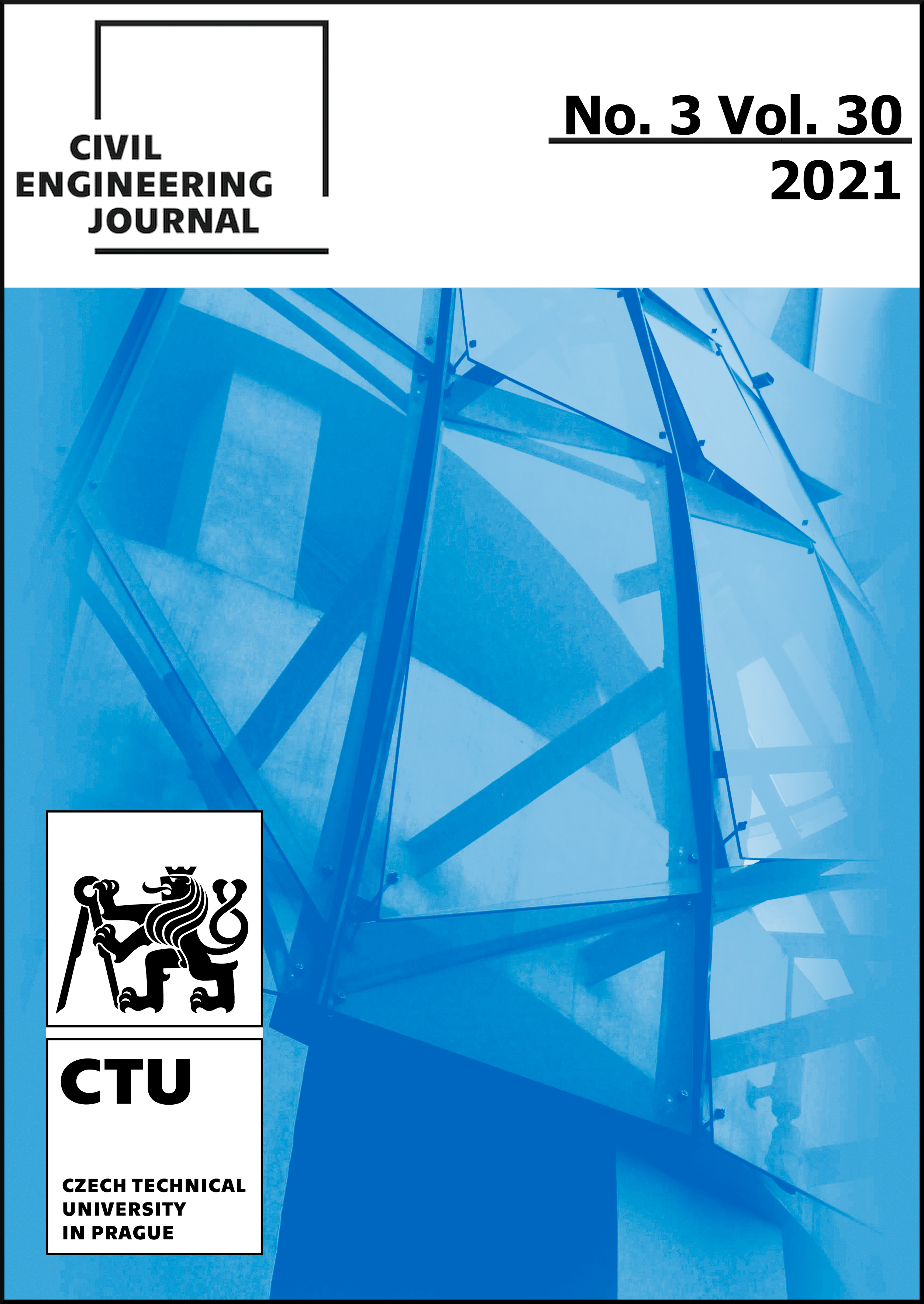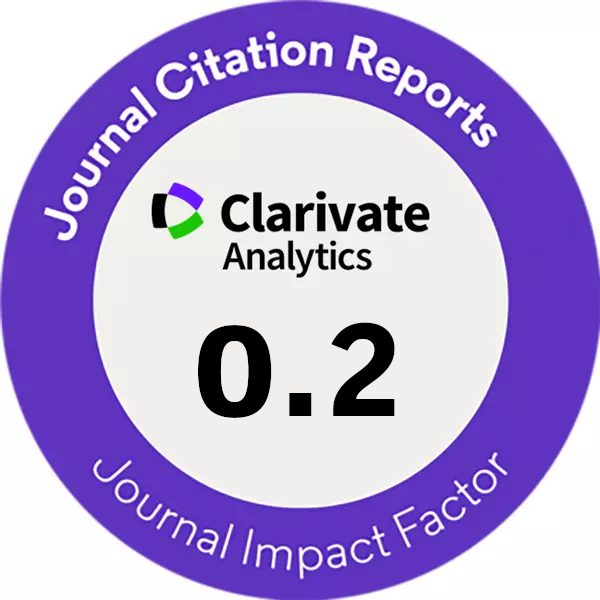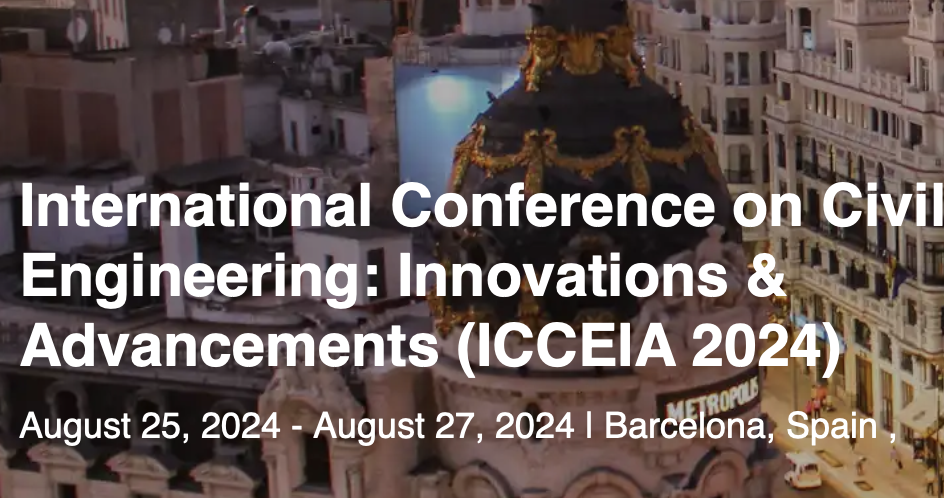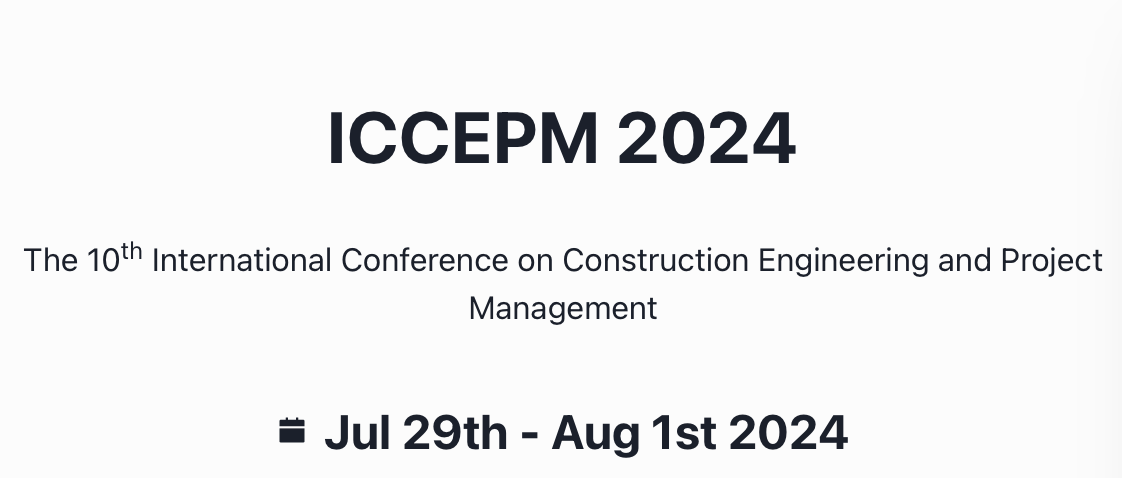Pressed non-fired bricks from phosphogypsum waste for non-load bearing wall
DOI:
https://doi.org/10.14311/CEJ.2021.03.0055Keywords:
Non-fired bricks, Phosphogypsum, Mechanical properties, Radionuclide activityAbstract
In several countries of the world, phosphogypsum represents a large quantity of waste that poses serious problems of environmental and groundwater pollution. This study aims at recovering phosphogypsum, in its raw state without treatment, in the manufacture of non-load-bearing non-fired bricks. The study starts with the analysis of the radionuclide activity of the materials constituting the bricks, in particular phosphogypsum, in order to avoid any human health problems after the manufacture and use of the bricks. Then, several compositions are tested with several preservation methods in order to optimize the composition. The physical, chemical and mechanical resistance is determined. The results show the possibility to produce non-load-bearing bricks based on untreated phosphogypsum which comply with the standards requirements, using low energy. Indeed, among the considered mixtures, two compositions (60% of PG and of 75% of PG) perfectly verify the physical and mechanical tests. Also, storage of the mixtures for two days in the laboratory and then three days in an oven at 70°C, allows to obtain the best resistance to compression. Thus, the obtained resistance is much higher than the minimum value required for non-load-bearing bricks.
Downloads
References
Yang, L., Yan, Y., & Hu, Z. H. (2012). Utilization of Phosphogypsum as raw Material for manufacturing of non-fired load-bearing wall bricks. In Advanced Materials Research (Vol. 374, pp. 787- 791). Trans Tech Publications Ltd.
Zhou, J., Sheng, Z., Li, T., Shu, Z., Chen, Y., & Wang, Y. (2016). Preparation of hardened tiles from waste phosphogypsum by a new intermittent pressing hydration. Ceramics International, 42(6), 7237-7245. [3] Yang, L., Zhang, Y., & Yan, Y. (2016). Utilization of original phosphogypsum as raw material for the preparation of self-leveling mortar. Journal of Cleaner Production, 127, 204-213.
Mechi, N., Ammar, M., Loungou, M., & Elaloui, E. (2016). Thermal study of Tunisian phosphogypsum for use in reinforced plaster. Current Journal of Applied Science and Technology, 1-10.
Naresha, R., Laxminarayana, P., & Sailaja, K. S. D. V. (2016). Yield and Moisture Studies of Rabi Groundnut as Influenced by Moisture Regimes and Phosphogypsum Levels. Research Journal of Agricultural Sciences, 7(3), 487-491.
Saadaoui, E., Ghazel, N., Ben Romdhane, C., & Massoudi, N. (2017). Phosphogypsum: potential uses and problems–a review. International Journal of Environmental Studies, 74(4), 558-567.
Ajam, L., Hassen, A. B. E. H., & Reguigui, N. (2019). Phosphogypsum utilization in fired bricks: Radioactivity assessment and durability. Journal of Building Engineering, 26, 100928.
Felfoul, H. S., Clastres, P., Carles, G. A., & Ouezdou, M. B. (2002). Amélioration des caractéristiques du phosphogypse en vue de son utilisation en technique routière. Waste Sci Tech, 28, 21. [9] Amrani, M., El Haloui, Y., Hajikarimi, P., Sehaqui, H., Hakkou, R., Barbachi, M., & Taha, Y. (2020). Feasibility of using phosphate wastes for enhancing high-temperature rheological characteristics of asphalt binder. Journal of Material Cycles and Waste Management, 1-11.
Degirmenci, N., Okucu, A., & Turabi, A. (2007). Application of phosphogypsum in soil stabilization. Building and environment, 42(9), 3393-3398.
Krishnan, K. D., Deepika, M., Ravichandran, P. T., Sudha, C., & Kottuppillil, A. K. (2016). Study on Behaviour of Soil with Phosphogypsum as Stabiliser. Indian Journal of Science and Technology, 9(23).
Amrani, M., Taha, Y., Kchikach, A., Benzaazoua, M., & Hakkou, R. (2020). Phosphogypsum recycling: New horizons for a more sustainable road material application. Journal of Building Engineering, 30, 101267.
Ennaciri, Y., Zdah, I., El Alaoui-Belghiti, H., & Bettach, M. (2020). Characterization and purification of waste phosphogypsum to make it suitable for use in the plaster and the cement industry. Chemical Engineering Communications, 207(3), 382-392.
Singh, M. (2002). Treating waste phosphogypsum for cement and plaster manufacture. Cement and Concrete Research, 32(7), 1033-1038.
Singh, M. (2005). Role of phosphogypsum impurities on strength and microstructure of selenite plaster. Construction and building materials, 19(6), 480-486.
Altun, İ. A., & Sert, Y. (2004). Utilization of weathered phosphogypsum as set retarder in Portland cement. Cement and Concrete Research, 34(4), 677-680.
Islam, G. S., Chowdhury, F. H., Raihan, M. T., Amit, S. K. S., & Islam, M. R. (2017). Effect of phosphogypsum on the properties of Portland cement. Procedia engineering, 171, 744-751.
Kacimi, L., Simon-Masseron, A., Ghomari, A., & Derriche, Z. (2006). Reduction of clinkerization temperature by using phosphogypsum. Journal of hazardous materials, 137(1), 129-137.
Kuryatnyk, T., da Luz, C. A., Ambroise, J., & Pera, J. (2008). Valorization of phosphogypsum as hydraulic binder. Journal of Hazardous Materials, 160(2-3), 681-687.
Karray, M. A., & Mensi, R. (2000, April). Etude de la deformabilite des poutrelles en beton arme a base de ciment Ultimax. In ANNALES DU BATIMENT ET DES TRAVAUX PUBLICS (No. 2).
Kumar, S. (2002). A perspective study on fly ash–lime–gypsum bricks and hollow blocks for low cost housing development. Construction and Building Materials, 16(8), 519-525.
Yang, J., Liu, W., Zhang, L., & Xiao, B. (2009). Preparation of load-bearing building materials from autoclaved phosphogypsum. Construction and Building Materials, 23(2), 687-693.
Zhou, J., Yu, D., Shu, Z., Li, T., Chen, Y., & Wang, Y. (2014). A novel two-step hydration process of preparing cement-free non-fired bricks from waste phosphogypsum. Construction and Building Materials, 73, 222-228.
Ajam, L., Ouezdou, M. B., Felfoul, H. S., & El Mensi, R. (2009). Characterization of the Tunisian phosphogypsum and its valorization in clay bricks. Construction and Building Materials, 23(10), 3240-3247. [25] Felfoul, H. S., Clastres, P., & Benouezdou, M. (2005). Gestion des sous-produits industriels et developpement durable: cas du phosphogypse de sfax (tunisie). Sciences & Technologie. B, Sciences de l'ingénieur, 66-81.
EN, B.: 772. Methods of test for masonry units (2011)
Inorpi: Nt 21-287. Specification des elements en maconnerie (2004)
Sankaran Pillai, G., Shahul Hameed, P., & Mazhar Nazeeb Khan, S. M. (2016). Radioactivity in
building materials and assessment of risk of human exposure in the Tiruchirappalli District of Tamil Nadu, India. Journal of Hazardous, Toxic, and Radioactive Waste, 20(3), 04016004.
United Nations Scientific Committee on the Effects of Atomic Radiation. (1994). Sources and effects of ionizing radiation. UNSCEAR 1994 report to the General Assembly, with scientific annexes.
Reguigui, N., Ben Kraiem, H., & Latrous, H. (1999). Monitoring and measurements of radioactivity around the valley of Madjerdah river in Tunisia (No. IAEA-TECDOC--1094).
AFNOR: Nf en 771-1. Specification des elements en maconnerie (2003)
Downloads
Published
Issue
Section
License
Copyright (c) 2021 Stavební obzor - Civil Engineering Journal

This work is licensed under a Creative Commons Attribution-NonCommercial 4.0 International License.
Authors who publish with this journal agree to the following terms:
- Authors retain copyright and grant the journal right of first publication with the work simultaneously licensed under a Creative Commons Attribution License that allows others to share the work with an acknowledgement of the work's authorship and initial publication in this journal.
- Authors are able to enter into separate, additional contractual arrangements for the non-exclusive distribution of the journal's published version of the work (e.g., post it to an institutional repository or publish it in a book), with an acknowledgement of its initial publication in this journal.
- Authors are permitted and encouraged to post their work online (e.g., in institutional repositories or on their website) prior to and during the submission process, as it can lead to productive exchanges, as well as earlier and greater citation of published work (See The Effect of Open Access).
How to Cite
Accepted 2021-08-16
Published 2022-11-14










